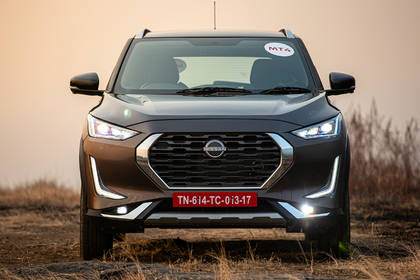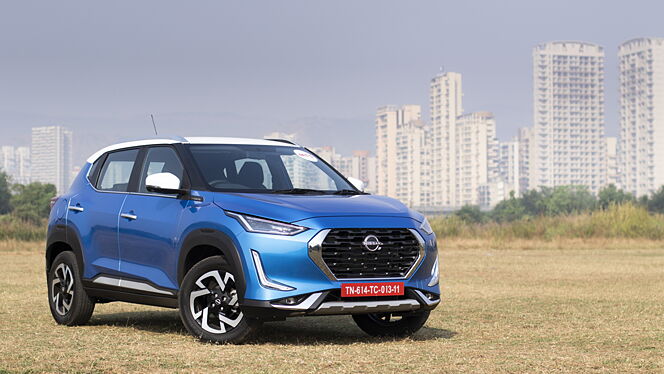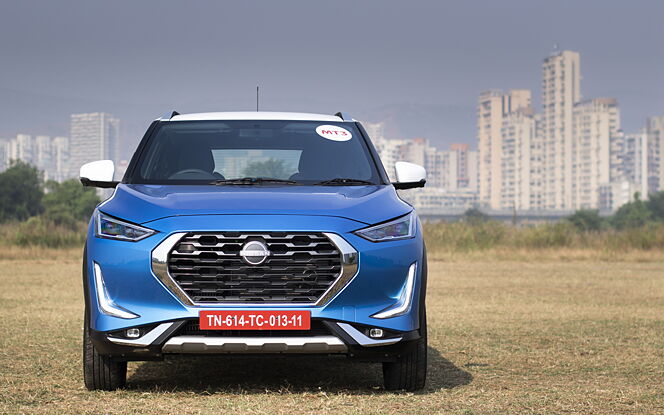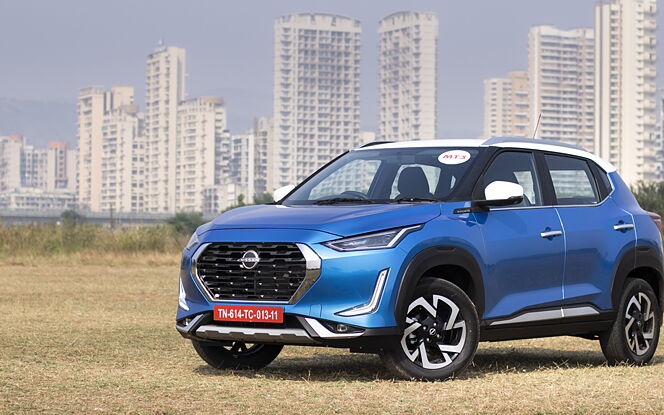Introduction
Safety Is Paramount When It Comes To Choosing A Vehicle, And The Safety Rating Is A Crucial Factor In Decision-Making. In This Detailed Exploration, We Delve Into The Safety Features, Testing Procedures, And Overall Safety Rating Of The Nissan Magnite. Join Us On A Journey Through The Intricacies Of Automotive Safety To Understand Why The Magnite Stands Out In This Critical Aspect.
The Nissan Magnite: An Overview
- Introduction To The Nissan Magnite: The Nissan Magnite, A Compact SUV, Has Gained Popularity For Its Stylish Design, Advanced Features, And Affordability. As Safety Is A Key Consideration For Potential Buyers, Understanding The Safety Rating Of The Magnite Becomes Essential.
- Evolution Of The Magnite: The Magnite Represents Nissan’s Commitment To Providing A Compelling Option In The Competitive Subcompact SUV Segment. Over Time, It Has Undergone Updates, Incorporating New Features And Safety Technologies To Align With Industry Standards.
The Significance Of Safety Ratings

- Why Safety Ratings Matter: Safety Ratings Serve As A Benchmark For A Vehicle’s Crashworthiness And Overall Safety Performance. They Provide Consumers With Valuable Insights Into How Well A Car Can Protect Occupants In Various Collision Scenarios.
- Crash Tests And Assessments: Safety Ratings Are Typically Determined Through Rigorous Crash Tests And Assessments Conducted By Independent Organizations. These Tests Simulate Real-World Scenarios To Evaluate A Vehicle’s Performance And Effectiveness In Protecting Occupants.
Nissan Magnite Safety Features: A Closer Look
- Structural Integrity: The Magnite Is Designed With A Focus On Structural Integrity, Featuring A Reinforced Body Structure To Absorb And Distribute Impact Forces In The Event Of A Collision. This Forms The Foundational Aspect Of The Vehicle’s Safety Features.
- Airbag System: Equipped With A Comprehensive Airbag System, The Magnite Ensures Protection For Both The Driver And Passengers. Frontal Airbags, Side-Impact Airbags, And Curtain Airbags Contribute To Occupant Safety In Different Collision Scenarios.
- Anti-Lock Braking System (ABS): The Anti-Lock Braking System Prevents Wheel Lock-Up During Emergency Braking, Enhancing Control And Stability. This Feature Is Particularly Valuable In Preventing Skidding And Maintaining Steering Control Under Heavy Braking.
- Electronic Stability Control (ESC): Electronic Stability Control Aids Drivers In Maintaining Control During Abrupt Maneuvers Or On Slippery Surfaces. By Selectively Applying Brakes To Individual Wheels, The Magnite Enhances Overall Vehicle Stability And Reduces The Risk Of Skidding.
Understanding Safety Testing: The Process Behind The Rating

- Independent Assessment Organizations: Safety Ratings For Vehicles Like The Magnite Are Often Determined By Independent Organizations Such As The National Highway Traffic Safety Administration (NHTSA) Or The Insurance Institute For Highway Safety (IIHS). These Organizations Conduct Thorough Evaluations Based On Standardized Testing Protocols.
- Crash Test Scenarios: The Magnite Undergoes A Series Of Standardized Crash Tests, Including Frontal Crash Tests, Side Crash Tests, And Rollover Tests. These Tests Assess Different Aspects Of The Vehicle’s Safety Features And Structural Integrity To Provide A Comprehensive Safety Rating.
- Occupant Protection: The Safety Rating Takes Into Account How Well The Magnite Protects Occupants, Considering Factors Such As Airbag Effectiveness, Seatbelt Performance, And The Integrity Of The Cabin Structure During A Collision.
The Nissan Magnite Safety Rating: Implications For Buyers
- 5-Star Safety Rating: A 5-Star Safety Rating Indicates That The Magnite Has Excelled In Safety Tests, Offering A High Level Of Occupant Protection And Robust Safety Features. This Rating Instills Confidence In Buyers Regarding The Car’s Crashworthiness.
- 4-Star Safety Rating: A 4-Star Safety Rating Suggests A Good Level Of Safety Performance, Though There May Be Areas With Room For Improvement. The Magnite With A 4-Star Rating Still Provides Substantial Occupant Protection But May Lack Certain Advanced Safety Features Found In Higher-Rated Vehicles.
- 3-Star Rating Or Below: A Lower Safety Rating May Indicate Shortcomings In Specific Safety Aspects. Buyers Should Carefully Consider The Implications Of A 3-Star Rating Or Below, As It Suggests Areas Where The Magnite May Fall Short In Crash Tests And Safety Evaluations.
Comparative Analysis: Benchmarking The Magnite Safety Rating

- Industry Standards: Benchmarking The Magnite Safety Rating Against Competitors In Its Class Is Essential. Comparing Safety Ratings Allows Potential Buyers To Gauge How Well The Magnite Performs Relative To Similar Vehicles In Terms Of Occupant Protection And Overall Safety Features.
- Consideration Of Testing Organizations: Different Testing Organizations May Have Variations In Their Assessment Methodologies. It’s Crucial To Consider The Specific Criteria Used By Organizations Like NHTSA Or IIHS To Ensure An Accurate And Comprehensive Understanding Of The Magnite’s Safety Performance.
Manufacturer Updates: Advancements In Safety Features
- Nissan’s Commitment To Safety: Nissan, As The Manufacturer Of The Magnite, Demonstrates A Commitment To Continuous Improvement In Safety. Updates To Safety Features, Driven By Advancements In Technology And Engineering, May Be Introduced In Newer Models To Enhance Overall Safety Performance.
- Advanced Driver Assistance Systems (ADAS): Evolution In Safety Features May Include The Integration Of Advanced Driver Assistance Systems (ADAS). These Systems, Such As Lane Departure Warning, Forward Collision Warning, And Automatic Emergency Braking, Contribute To An Enhanced Safety Profile For The Magnite.
Addressing Common Safety Concerns: Faqs

- Is The Magnite A Safe Car? Yes, The Safety Rating Of The Magnite Provides Assurance Of Its Crashworthiness And Occupant Protection. However, Buyers Should Consider The Specific Safety Features And Ratings Relevant To Their Preferences And Requirements.
- Are Safety Features Standard Across Trims? While Certain Safety Features May Be Standard Across Trims, It’s Advisable To Review The Specific Safety Features Included In Each Trim Level. Higher Trim Levels May Offer Additional Safety Technologies Or Enhancements.
- How Often Should Safety Features Be Checked? Regular Checks Of Safety Features, Including Airbags, Brakes, And Electronic Systems, Should Align With The Manufacturer’s Recommended Maintenance Schedule. This Ensures That Safety Features Are Functioning Optimally.
Conclusion: Embracing Safety In The Nissan Magnite
The Safety Rating Of The Nissan Magnite Is A Testament To The Vehicle’s Commitment To Occupant Protection And Road Safety. By Comprehensively Understanding The Safety Features, The Testing Process, And The Implications Of The Safety Rating, Potential Buyers Can Make Informed Decisions About The Magnite As A Secure And Reliable Choice On The Road. As Automotive Safety Standards Continue To Evolve, The Magnite Exemplifies Nissan’s Dedication To Providing A Safe Driving Experience For All.

